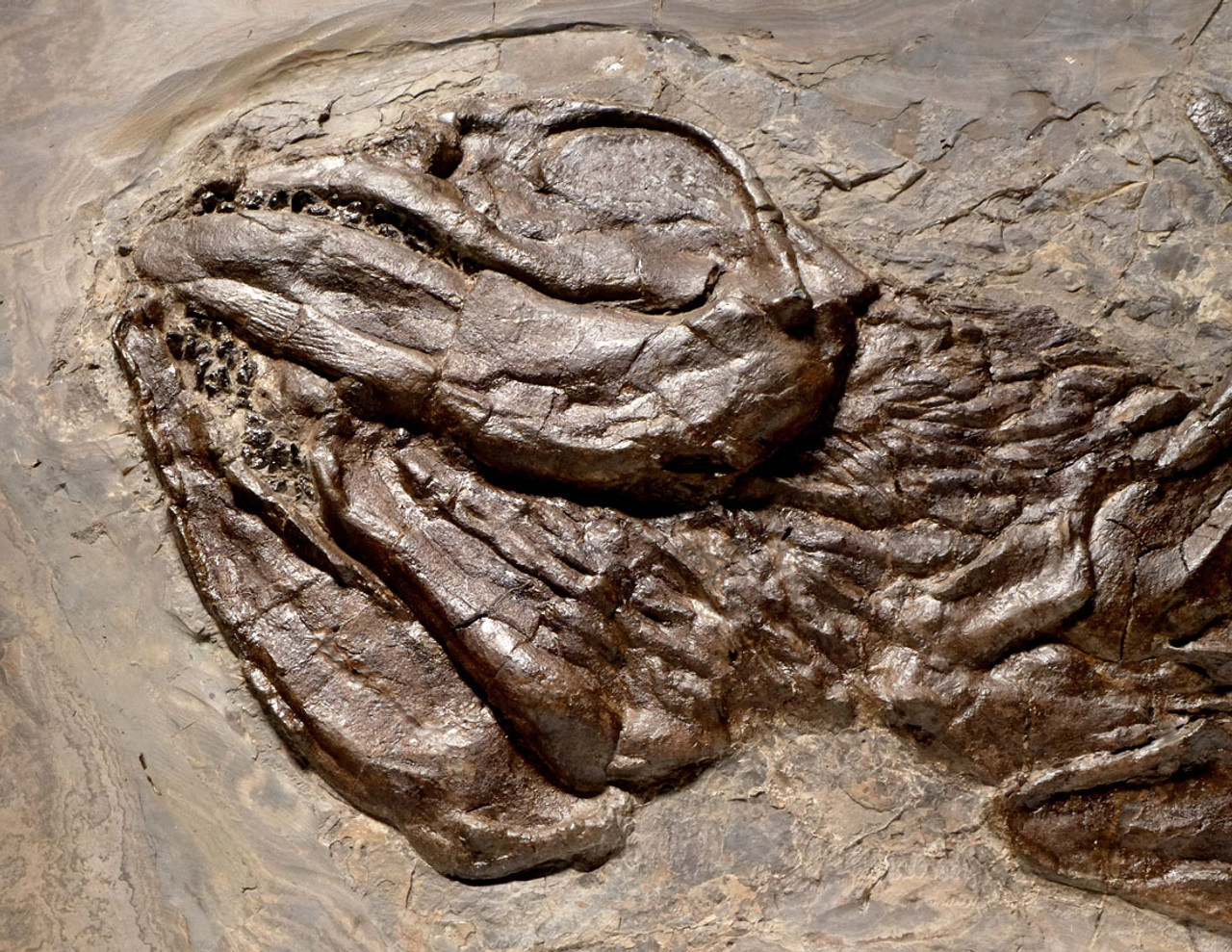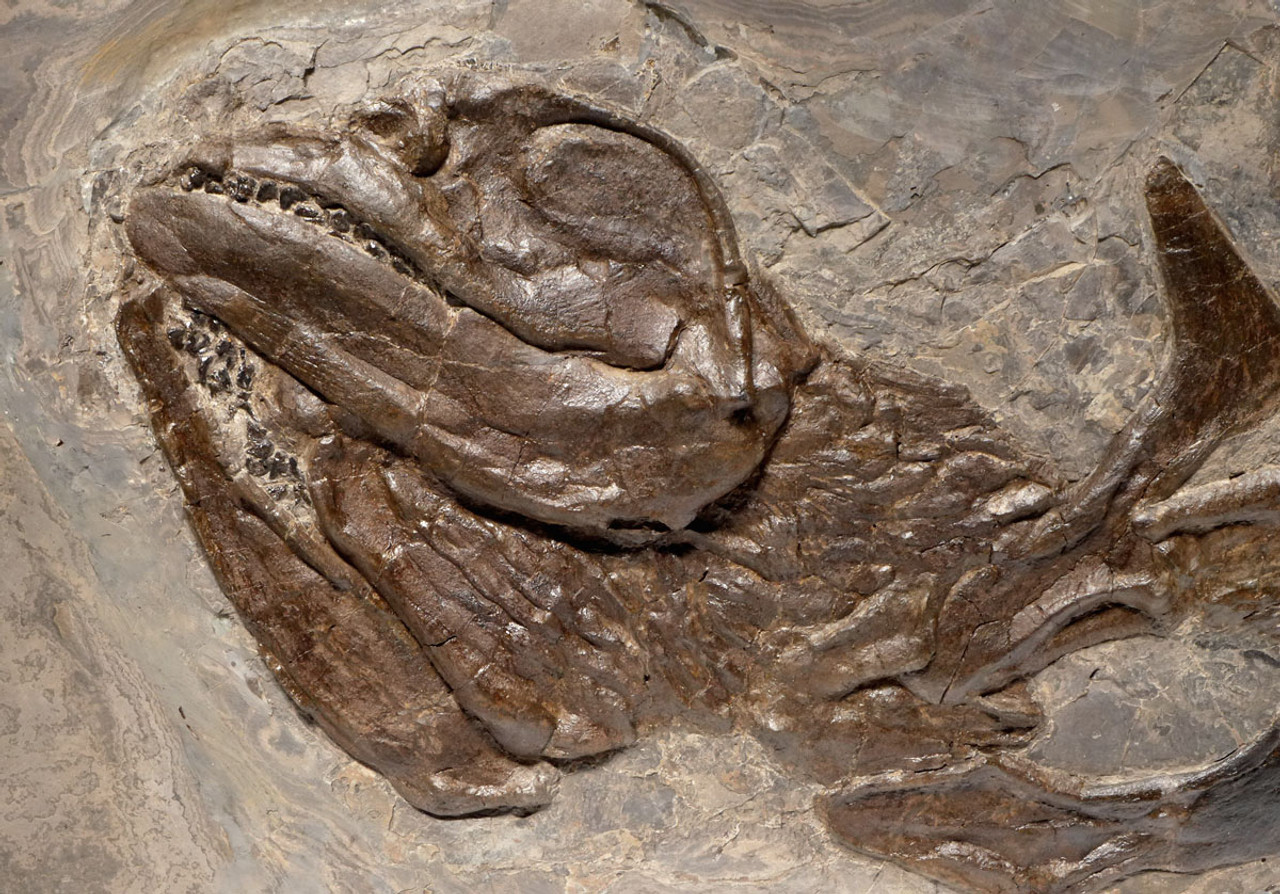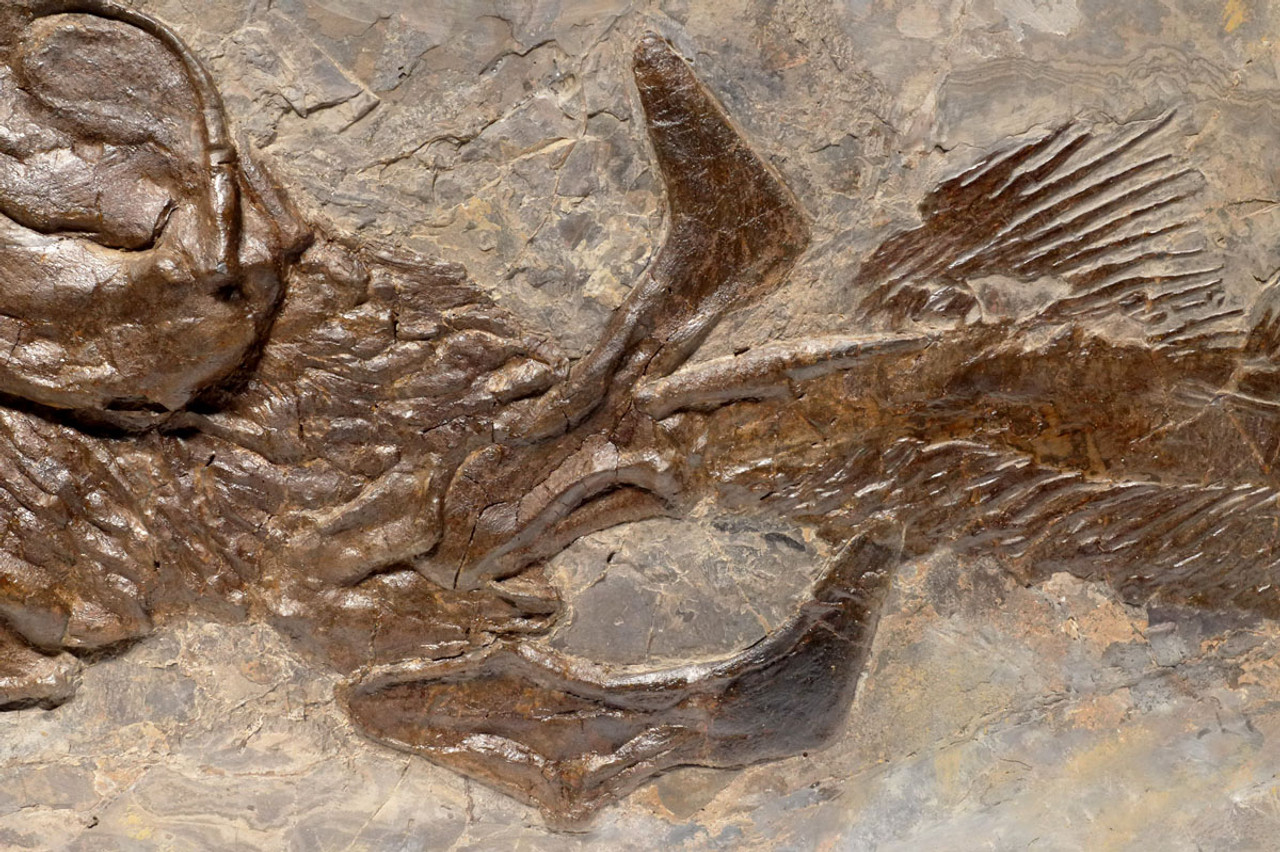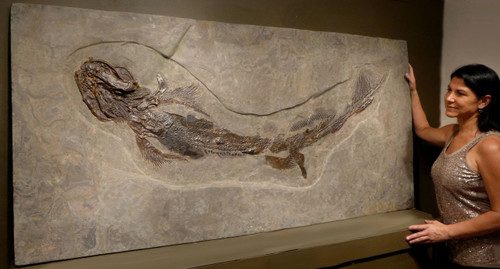Product Description
Recently completed in our preparation lab facility, we are pleased to present this spectacular giant fossil Orthacanthus (Lebachacanthus) senckenbergianus shark. This was one of the prime apex predators of the Permian Period and yet, this intriguing fossil shows a half-eaten shark in the form of a partial torso and head of a large example of this species. One has to wonder how large was the creature that inflicted such a fatal attack on prey this large! If this Orthacanthus was simply scavenged, it would seem that the remaining skeletal structure that is preserved here, would have been also, partially eaten and mangled. Predation fossils are always fascinating specimens for exhibit but to see a major apex predator as the prey makes this an especially interesting piece.
This extremely rare Permian shark fossil represents a fortuitous opportunity for the ultimate collector looking for THE FINEST AND RAREST specimens for their own private museum or to loan on public exhibition. Where the price of a complete Orthacanthus shark of this quality may be out of the reach of most collectors, this specimen comes at a fraction of the cost with all the substantial anatomy and quality of a top-grade, complete example.
Premium features of this piece to point out:
1. The teeth are fully exposed and still articulated in the jaws
2. The pose of the shark is ideal for display with a side but slightly ventral view showing full pectoral girdle and skull with both mandibles.
3. Entire fossil has been prepared with acid and hand tools to exposed all anatomy in full, three-dimensional form as it was preserved.
For museums wishing to showcase one of these extraordinarily rare fossil sharks without the high specimen cost, this example offers such an opportunity.
As stated, we performed the entire preparation to this specimen so we can fully attest to all the work done. The nature of how these fossils are prepared are most time and work intensive. Every little detail must be ground out by hand, carefully removing all matrix covering the fossil skeleton. To assist, acid is applied to the fossil to removed delicate matrix. Many of these specimens are hastily prepared by simply grinding a level layer off of the top of the fossil, often destroying much of the original anatomy. Unlike such an expedient but inferior method, we carefully removed the overlying matrix completely around the three-dimensional anatomy of the entire fossil surface, exposing superb multi-layered detail of the original exquisitely preserved skeleton and skull. The pose of this fossil shark is exactly as it died over 260 million years ago. What is rare is that this specimen is PERFECTLY laid out with the finest spread of all its fins. In many cases, fossils of these large sharks show poor articulation and were fossilized in poses that are unattractive or twisted. The menacing appearance of this shark is impressive and further enhanced by the jet black teeth. The original plate has been re-inforced on the back side with epoxy.
HISTORY
From a period in time before the dinosaurs even walked the earth, the bizarre Orthacanthus thrived in prehistoric swamps and bayous in Europe and North America. The Orthacanthus was an ancient freshwater shark that is no longer in existence. It had a very long spine protruding from the back of the head followed by a long ribbon-like dorsal fin that gave it the appearance of an eel. The double forked teeth were another unique characteristic. A full grown Orthacanthus is believed to have grown to 10 feet in length and was THE most dangerous apex predator that terrorized all creatures that lived in its environment.
SPECIAL NOTE: The current laws in this state of Germany have forbid the collection of these remarkable fossils since 1986. This legislation has permanently ended the supply of such magnificent specimens such as this one being offered here. This rare example was originally collected years prior to the ban but remained unprepared until very recently when we acquired the specimen from the original collector and performed all the preparations ourselves. With digging in the formation now off-limits, a specimen such as this is sure to appreciate in value as an incredibly promising investment as well as leave speechless everyone who has the pleasure to experience it in person. Specimens like this are true international natural history treasures - exceedingly rare in any collection of this quality of preservation as well as execution of its preparation.
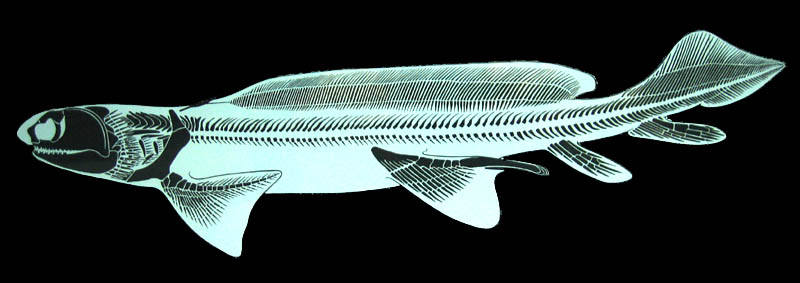
 US DOLLAR
US DOLLAR
 EURO
EURO
 AUSTRALIAN DOLLAR
AUSTRALIAN DOLLAR
 CANADIAN DOLLAR
CANADIAN DOLLAR
 POUND STERLING
POUND STERLING


